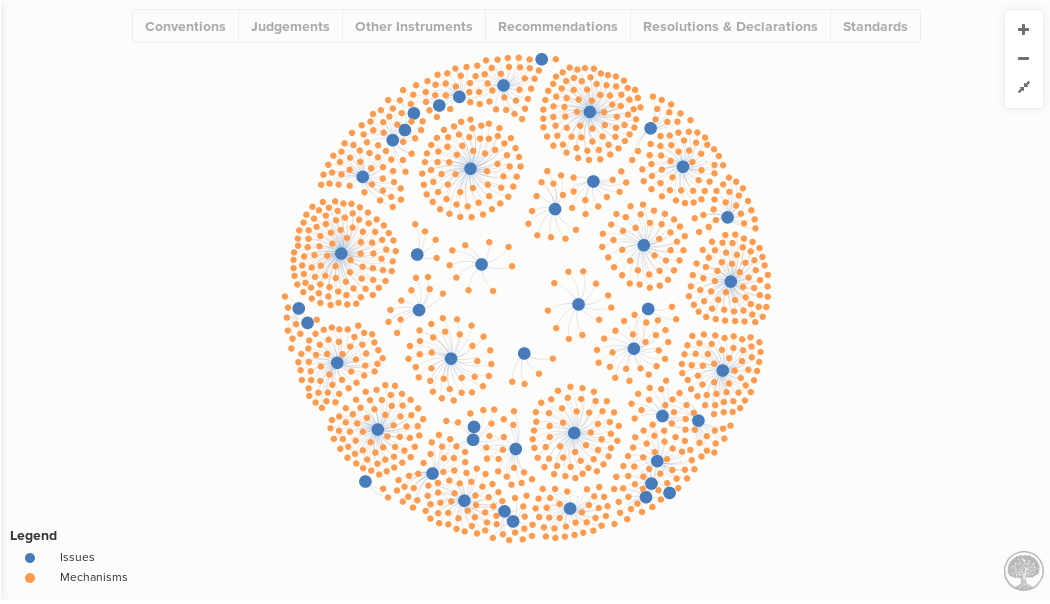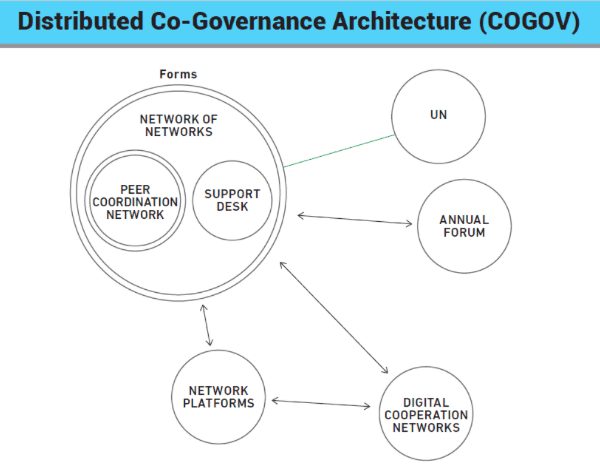Digital governance: Who is picking up the phone?
Updated on 16 May 2024
‘Who do I call if I want to call Europe?’ asked Kissinger a few decades ago. The essence of Kissinger’s question could easily translate to the digital context: who do we call to solve our digital problems? And I would even go a step further and ask ‘who is picking up the phone?’
The more digitalisation impacts our lives, the more we will hear calls from citizens, companies, and countries for digital policy solutions in the fields of artificial intelligence (AI), e-commerce, cyber-money, fake news, child safety, and more.
In May this year, following the online broadcast of the terrorist massacre in Christchurch, New Zealand and France issued the Christchurch Call to eliminate terrorist and violent extremist content online. Mark Zuckerberg called on governments to develop rules for data and AI. Microsoft proposed the Digital Geneva Convention as a solution for cybersecurity challenges. Last year, several new declarations and resolutions related to security in cyberspace were launched in the space of a few weeks. This included the Paris Call for Trust and Security in Cyberspace, issued by over 100 governments and companies.
Today, more than a thousand mechanisms, processes, and organisations address technical, economic, and policy aspects of digital developments. The first step is to know what they do and how to avoid governance duplications. Click on the visualisation below (new tab will open), or visit https://dig.watch/instruments, to explore these mechanisms, processes, and organisations.

Responding to digital policy calls
- Who should respond to digital policy calls?
- How should responses be handled?
- Where should responses be developed?
These three questions are addressed in the Report of the High-Level Panel on Digital Cooperation established by the UN Secretary-General and co-chaired by Melinda Gates and Jack Ma.

WHO?
Effective policy solutions require the inclusive participation of governments, the tech industry, local communities, academia, and other actors.
For example, how can policies on data centers, online platforms, and Internet cables be developed without the participation of the tech companies who own and run these digital facilities? How can civil society be ignored, when it speaks on behalf of millions of Internet users?
While there is prevailing consensus on inclusive digital policy, the main question is how to ensure that all relevant actors are effectively involved in addressing policy issues such as hate speech, e-commerce, and AI, to name just a few.
All actors should participate according to their respective roles and responsibilities as outlined in Articles 35 of the 2005 Tunis Agenda for the Information Society. In brief, and admittedly at the risk of oversimplifying, governments adopt public policies; industry provides technical solutions; and civil society holds all actors accountable.
HOW?
1. Digital policy actions must be rapid. For example, the Christchurch Call was issued by governments just two months after the terrorist attack in New Zealand.
The traditional method of drafting treaties takes a long time. The UN Convention on the Law of the Sea was under negotiation for nine years. Such an approach is not adequate for dealing with the fast-evolving issues of data governance, AI, cybersecurity, e-commerce, and other areas of digital governance.
2. The cross-border nature of the Internet requires international policy solutions. For example, it is not easy to impose digital taxes at the national level for global platforms such as Facebook and Google. Thus, the EU, the OECD and the G7 are searching for a formula for global digital taxation. Similar cross-border policy challenges exist with regulating e-commerce, combating cybercrime, and other areas of digital policy.
In the context of international policy solutions, the UN has to find a new role as a ‘digital home’ for all nations and people worldwide. Quite a few bricks have already been laid by the Internet Governance Forum (IGF), which is an inclusive, agile, and innovative structure developed under the auspices of the UN. The IGF needs to be further developed (as the Panel proposes – see below) in order to deal with existing and new digital developments such as AI and big data.
3. Digital governance must deal with many (un)known unknowns. Current issues such as digital fake news and ethical AI emerged on the policy agenda only recently. Like earthquakes, it is difficult to predict where such issues will emerge, or prevent them. But, as with earthquakes, we have to prepare to deal with their consequences. The Panel’s proposals for dealing with ‘digital unknowns’ include policy sandboxes and incubators which can react fast to policy problems, develop solutions, monitor their impact, and adjust them based on feedback from users, industry, and governments worldwide.
4. Digital solutions require policy choices and trade-offs between different interests, and current and future considerations. So far, some of the most complex debates have pitted issues against each other, such as:
- freedom of expression versus dealing with hate speech;
- privacy versus the data-driven economy;
- current digital growth versus the rights of future generations; and
- intellectual property protection versus freedom of use of digital content.
In order to facilitate informed and effective trade-offs, the digital governance architecture should provide a space for reconciling different interests and positions.
5. Digital issues must be addressed in a multidisciplinary way. For example, dealing with data requires us to consider commercial, technical, security, and human rights policy issues. AI is about technology, but also about ethics, law, and security. Digital inclusion requires much more than the ‘Internet cables’. The list goes on. Almost all digital issues require multidisciplinary solutions.
WHERE?
Digital policy issues are addressed on all governance levels: local, national, regional, and global. Given the overall functionality and impact of the Internet, many issues require a global approach. The Panel proposed three governance models for addressing digital issues on the global level:
- Internet Governance Forum Plus (IGF+)
- Distributed Co-Governance Architecture (COGOV)
- Digital Commons Architecture (DCA)
The IGF Plus proposal is the most mature and closest to the digital reality. The COGOV and DCA proposals also provide useful building blocks.

The IGF Plus can be built on the existing mandate provided by Article 72 of the 2005 Tunis Agenda for the Information Society. At a time when there is no appetite for new multilateral mandates, this is one of the main strengths of the IGF Plus proposal.
In addition, IGF Plus uses an evolutionary approach by:
- building on the achievements of the existing IGF process: gender balance (difficult to achieve in the digital field), innovative working methods, and a well-developed network of national/regional IGFs); and
- addressing major weaknesses of the IGF such as lack of actionable outcomes, lack of dedicated discussion tracks for governments and other stakeholders, and limited participation of actors from small and developing countries.
The innovative architecture of the IGF Plus proposal includes:
- A Cooperation Accelerator to foster links among organisations and processes on specific issues such as AI, data governance, and e-commerce. For example, organisers of major events should co-ordinate their coverage of issues such as AI. Instead of repeating the same or similar discussions at tens of AI-related events, a co-ordinated approach could help different actors specialise and cover specific angles of AI policies including ethics, security, human rights, and public good.
- A Policy Incubator to monitor and develop policies and norms. For example, after receiving proposals, such as the Christchurch Call or the Paris Call, the policy incubator would focus on identifying whether existing rules can address identified problems. In many cases, they can.
- An Observatory and Help Desk to provide facts and updates on digital policy, co-ordinate capacity development activities, and help actors, in particular those from small and developing countries.
The highly decentralised structure of the IGF Plus would be co-ordinated by an Advisory Group gathering leaders from tech industry, governments, academia, and civil society. To ensure legitimacy and success, it would be essential that the Advisory Group is chaired by, or has other close involvement from, the UN Secretary-General.
The main weakness of the IGF Plus proposal is its name. Digital policy has moved beyond the core Internet issues towards data policies and AI. The most appropriate name for the IGF Plus structure would be the Digital Cooperation Forum or even the Digital Cooperation Council.

The COGOV should generate digital cooperation solutions, including norms, and make them available for stakeholders to consider and potentially adopt. The COGOV architecture should provide the following functions:
- Digital Cooperation Networks that would strengthen co-operation, design or update digital norms, and develop the capacity to adopt policies and norms.
- Network Support Platforms that would support digital co-operation networks and enable them to evolve.
- A Network of Networks that would co-ordinate and support activities across all digital co-operation networks and network support platforms.

The DCA proposal focuses on the promotion and realisation of the sustainable development goals (SDGs). It consists of:
- Multistakeholder tracks that would generate dialogue around emerging digital issues and communicate related problems to be solved by stakeholders. The output of these tracks would be discussed at an annual meeting, which would provide guidance to stakeholders.
- A small secretariat, possibly housed within the UN, that would ensure light co-ordination of the tracks and organise their annual meeting.
Next steps
After many policies and academic discussions on digital governance, it is now time for consolidation and action. The three governance models proposed by the Panel provide space for convergence among different views and positions.
The first follow-up steps have already been made by actors in Geneva, and through the regional consultations by EuroDIG. The UN called for comments on the Panel’s Report, including the three governance models.
The next main stop on this journey is the 14th IGF in Berlin (25-29 November 2019), where the Panel’s recommendations on governance will be discussed.
The criteria for success in developing a digital governance architecture is clear and simple: how will the new governance model answer the growing number of digital policy ‘calls’?
You can monitor follow-up on the UN High Level Panel on Digital Cooperation here and updates on digital cooperation mechanisms and instruments here.
For background reading on Internet and digital governance you can consult ‘An Introduction to Internet Governance’ by Jovan Kurbalija.
Related blogs
Related events
Related resources
Subscribe to Diplo's Blog
The latest from Diplo and GIP
Tailor your subscription to your interests, from updates on the dynamic world of digital diplomacy to the latest trends in AI.
Subscribe to more Diplo and Geneva Internet Platform newsletters!
Diplo: Effective and inclusive diplomacy
Diplo is a non-profit foundation established by the governments of Malta and Switzerland. Diplo works to increase the role of small and developing states, and to improve global governance and international policy development.


Dear Lichia, we will follow…
Dear Lichia, we will follow-up with a few suggestions. Warmest regards, Jovan
Thank you Antonio. It will…
Thank you Antonio. It will be interesting to see if and how ‘policy calls’ from the start-up community are answered. What is the ‘phone number’ when their innovative ideas hit (in)visible policy walls? Who will answer their calls? These are the real challenges of linking startup and policy fields in creative and enabling ways.
Great piece Jovan! A lot of…
Great piece Jovan! A lot of valuable insights and recommendations. It is now “just” a matter of execution. Cheers.
Dear Jovan, Great blog. Very…
Dear Jovan, Great blog. Very thought provoking! Thanks for sharing! For the digital non-native, it will be helpful if there could be a small tutorial on how to make use of the GIP interactive network included in your blog. After trying to play with it, the screen stays on the same image and can’t be manipulated anymore. Thanks, Lichia